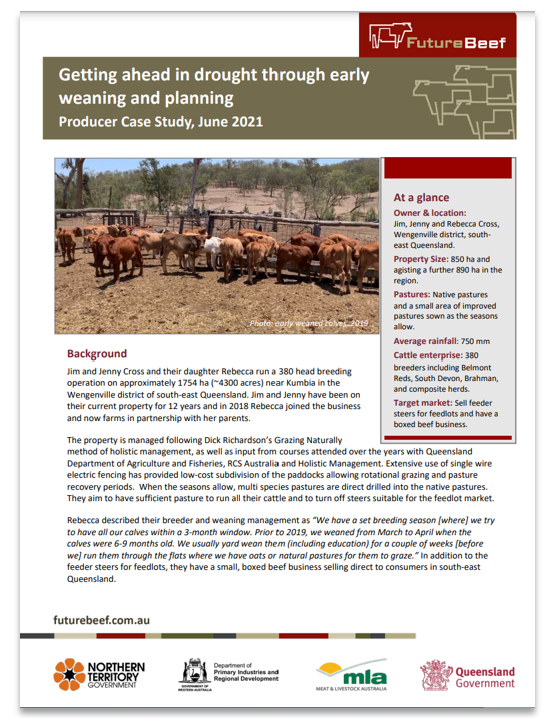Making sense of early weaning
Weaning is one of the most effective management tools available to manage your breeder’s body condition. Removing the need to produce milk for a calf in the early dry season is equivalent to providing the breeder with a supplement of up to 2 kg of grain or 3 kg of fortified molasses every day.
Early weaning, when done effectively, can result in better overall breeder condition, higher conception rates and lower costs of breeder supplementary feeding. It is practiced most commonly in drought affected areas and refers to the weight (age) of the calf and not to the time of muster.
The Department of Agriculture and Fisheries GrazingFutures team, together with Désirée Jackson, have produced a practical and informative presentation.
Topics covered during this presentation include:
- benefits
- challenges
- nutritional considerations
- management considerations
- animal health and husbandry considerations.
You can watch the full recording or use the playlist below to jump to the start of a particular section within the presentation. 45:58; published 18 December 2019 by FutureBeefAu.
Playlist
- Disclaimer and Copyright
- Making sense of early weaning
- Before starting an early weaning program
- Benefits of weaning to maintain breeder body condition score (BCS)
- Energy (ME) requirements varies for breeders
- Benefits to breeders
- Challenges with early weaners
- Nutritional considerations
- The rumen and stomach
- Physiological changes in the calf
- Function of papillae in the rumen
- Microbes in the gut
- Microbial function depends on…
- Weaning management in the yards
- Weaner nutrition
- Nutritional problems
- What to wean?
- What is good hay?
- Quality of hay for weaners
- Segregation of weaners
- Feeding small calves (60-100kg)
- Potential feeds when pasture quality is poor
- Husbandry
- Keeping records
- Animal health
- Out in the paddock – now what?
- Intake – why is it important?
- Quality of pasture as affected by maturity
- Protein
- Energy
- Water intake
- Take-home messages
 Producer case study
Producer case study
Getting ahead in drought through early weaning and planning